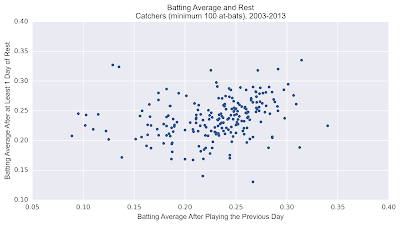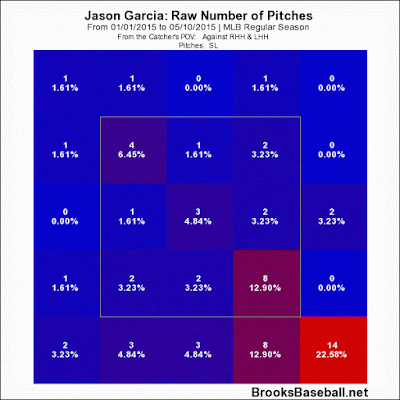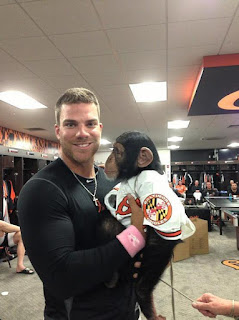Jake Brintzenhofe contributes to our expanded roster freelance effort. Feel free to email us with a sample article if you are interested in being a part of that.
By signing Chris Davis to his recent mega deal, the Orioles sent a message: the club is built to win. The contract was a mortgage on the future by saddling what is likely dead money five years down the line for the sole purpose of sustaining the competitive status of the team over the next two or three years. With more holes to fill, then what else can the club do during the back end of free agency? Rumors have the Orioles willing to spend as much as $15 million more on their payroll next year and two major holes to fill: one in the rotation and one in the corner outfield. Let us assume that to fit their budget, they are going to choose to fill one of these holes with a free agent at a salary in the $10 million per year ballpark. Two possible fits left on the market are Austin Jackson and Doug Fister – this article will examine which player would make more sense in Camden Yards.
Doug Fister
Steamer, Fangraphs’ projection model, projects that Fister will be worth 1.4 WAR next year. I like Steamer, but chose to also run my own projection using a weighted linear model and Baseball Reference’s similarity score feature. I used the ten most similar players to Fister and then weighted each of the ten’s contribution to the model based on how similar those players were to Fister. The ten players were Ray Washburn, Danny Cox, Mike Scott, Pat Zachry, Cy Blanton, Dutch Leonard, Dick Donovan, Craig Swan, Jack Kralick and Virgil Trucks. I was struck by the fact that these were old timers for the most part; we have not seen a player quite like Fister in a long time. It was also striking that their age 32 season’s WAR (Fister’s age next year) ranged as high as 6.9 and as low as -2.1; there really was not a cluster.
My projection ended up a bit less optimistic than Steamer at 1.235 WAR next year for Fister. This is a great time to say that a projection is different than a prediction. Projections are the average result of a range of outcomes – if our projection uses correct assumptions, it’s a coin flip for which side of it Fister lands on. While 1.235 WAR is a solid expected value, it’s likely that given the wide range of performances by the group we used to project Fister, he will fall on either side of it by a significant amount. There is a lot of possible variability. For the Orioles to succeed, they really need Fister to out perform that projection. To assess which side Fister would likely fall on, I took a look at his peripherals. The chart below describes several important numbers for predicting future performance.
A few takeaways:
- Fister’s fly ball rate and home runs per fly ball took a jump from 2013 to 2014 and stayed there in 2015. Fly balls account for the overwhelming majority of home runs. If fly balls are happening more often and leaving the park more frequently, that means A LOT more home runs allowed.
- Fister’s line drive rate also took a jump. Line drives are bad for pitchers because they are difficult to turn into outs. Per Fangraphs, line drives result in a .685 average for hitters when they occur; given this, Fister will simply not be able to be effective if he continues to give up line drives at a high rate.
- Fister’s fastball velocity has consistently declined for the last 5 years and 32 year old pitchers do not gain velocity back on their fastball. It’s highly likely that that velocity continues to drop and that hitters hit Fister more often with more hard contact going forward.
Austin Jackson
Steamer projects that Jackson will be worth 1 WAR next year.
I used the same weighted model system as explained above and got a projection
of .863 WAR next year for Jackson. The ten players used were Brian McRae, Jim
Piersall, Marquis Grissom, Gerardo Parra, Augie Galan, Al Cowens, Coco Crisp,
Bobby Tolan, Lenny Dykstra and Johnny Groth. This group is significantly more
modern than that of Fister and was much more consistent with performance. While
their range went from -1.1 WAR up to 4.4 WAR; they were mostly between -1 WAR
and 1.5 WAR.
Just as with Fister, I took a look at Jackson’s
peripherals to see if we could learn anything about which side of the
projection he’ll likely fall on.A Few Takeaways · Other than a possible fall in line drive rate the last 3 years, there aren’t any clear trends in the data. · I took a look at Jackson’s splits versus lefties and righties and didn’t see an abnormal difference. As such, he doesn’t profile as a great platoon option. · Jackson has extremely high BABIP numbers; for a player of this age, that normally stays high until he ages and loses speed. Jackson being 29 next year means he probably has a few more years before this starts to steeply decline.
Recommendation:
Neither player inspires optimism for the type of big year the Orioles probably need to make themselves serious wildcard contenders. That said, if the Orioles are serious about contending next year, they need to make the savvy moves where they find a player who is going to really outperform his projection and thus his price.
On January 15, Jerry Crasnick reported that Fister was seeking a deal for 2 years and $22 million. I couldn’t find any reports on a possible contract for Jackson, but he played on a 1 year $7.7 million deal last year – it’s reasonable to think he would take a similar deal this year. While this isn’t exactly a scientific comparison, it’s fair to assume that Jackson will come a bit cheaper than Fister will. I can’t get past Fister’s fastball velocity decline or his increasing propensity to give up home runs; I see him as a bad gamble. This is especially true given that Camden Yards was the second most home run friendly park in baseball last year.
Jackson on a cheaper one year deal with little risk makes more sense. While his peripherals are all over the road, their randomness makes it hard to say for sure that he’ll decline. He was a plus defender last year and could give the Orioles outfield depth that they have sorely missed the last several years. I wouldn’t expect much more than 1 WAR, but it appears far more likely that he out does this number than that Fister does. If I were the Orioles GM, I would offer Jackson a one year deal to play at Camden Yards, the third best park for run production in the MLB last year, and maybe earn himself a big contract next offseason.














